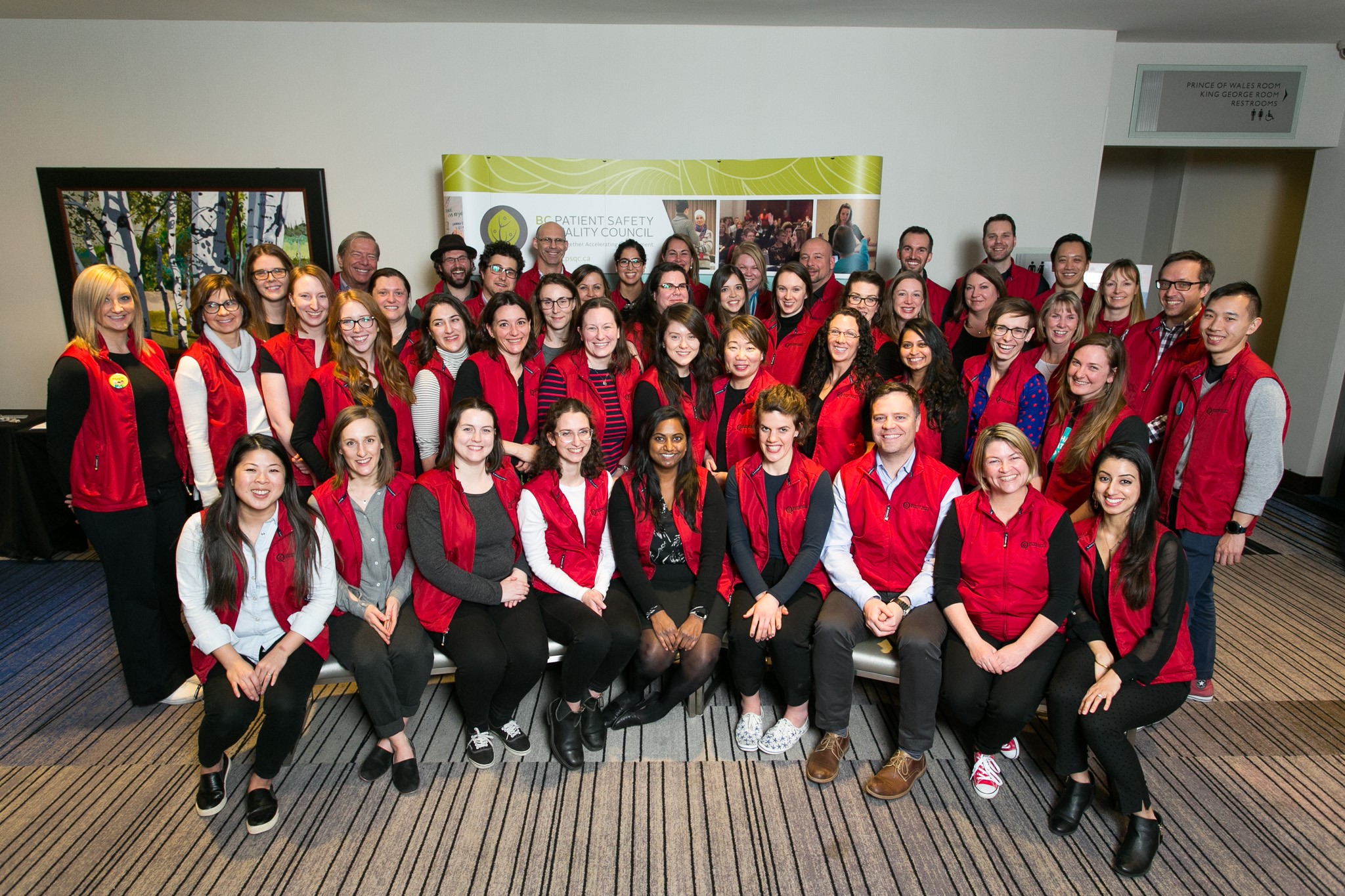Posted • Last updated
Categories: Working Together for Better Health Care
Falls are a leading cause of injury-related hospitalizations and often the reason why older adults lose their independence. Without prevention efforts, it is estimated that one third of people over the age of 65 will fall once or more each year.1 Fortunately, falls are not inevitable. Coordinated prevention efforts and systems of care can reduce falls and subsequent negative impacts to quality of life. In 2021, Northern Health’s Rehabilitation Services Program set out to ramp up its prevention efforts.
Part 1: Policy & Standard Updates
Their first step was to update the Northern Health falls prevention strategy for community settings to include the latest evidence and best practices, as well as to ensure a person- and family-centred approach. In his role as Executive Lead, Rehabilitation Programs, Tysen Leblond set about assembling a project team, enlisting help from clinicians and staff from the population health and policy offices, but quickly realized that an important perspective was missing. “Patients bring a unique perspective that was missing from our group, and we wanted to ensure our practice standard would be valuable to our clients,” he shared.
Tysen reached out to PVN, and two patient partners were recruited to provide feedback on the draft. One of them was Vern Mitchell, a self-described ‘young at heart senior’ whose interest in this initiative was piqued due to personal experiences with falls. “I have seen my Mom advance through stages of MS which in the early years saw her falling a lot. My late Father had dementia and many balance and falling issues as he progressed. I myself was born with rickets (very rare in the late 50s but it got me) which has left me with lifelong balance issues with stairs and inclined surfaces.”
Those lived experiences and the insights into risk, assessments and care they produce are exactly what the team was looking for. Tysen and his team took care to orient the patient partners to the project through an initial 1-hour orientation session to review the development of policies and clinical practice standards and background information on the falls prevention strategy at Northern Health. The patient partners went away and independently reviewed the materials, then reconvened for a draft discussion meeting where they shared their feedback and discussed ideas for improvement.
“They were involved in reviewing the policy in its entirety including all attached links, the client-focused resources and language used in clinical assessments within the policy,” explained Tysen. “Through that process, I was able to share my experiences from family and my volunteer work in a care home setting,” shared Vern.
Part 2: Education & Awareness
Following the updates to the Clinical Practice Standards, a second project was initiated in the fall of 2021 to develop an educational and awareness package about falls prevention for health care providers working in community settings. Two additional PVN patient partners joined the working group to share their perspectives and experiences with risk assessments, interventions and follow-up care. The working group met weekly via Zoom for a month. The hope was that incorporating patient experiences into the training materials would encourage person-focused learning, as opposed to a task-only orientation. “The patient partners also helped us to develop staff education case scenarios, anonymizing details of course,” added Tysen.
Outcomes & Impacts
The policy is now live and used by staff across Northern Health, and staff education on its application is ongoing. “The patient partners’ suggestions helped to ensure that the core principles of (a) person- and family- centred care approach shaped the clinical practice standard. They really helped us hone in on the importance of collaborative practice, including exploring ways to work closely with the patients/family, physicians and other clinical staff throughout the entire process: assessments and care planning in falls prevention,” shared Tysen. “The introduction of a shared (patient and provider) falls prevention assessment is the first of its kind in Northern Health, to my knowledge,” he added.
“The engagement resulted in a stated commitment from clinical practice standard developers to employ more consistent wording throughout the document that tasks be done in partnership with clients and families. We hope this will encourage client activation and maximize opportunities for shared decision making with regards to falls prevention,” said Tysen.
The patient partners’ suggestions helped to ensure that the core principles of (a) person- and family- centred care approach shaped the clinical practice standard. They really helped us hone in on the importance of collaborative practice, including exploring ways to work closely with the patients/family, physicians and other clinical staff throughout the entire process: assessments and care planning in falls prevention.
Tysen Leblond
Challenges & Benefits
When asked about any challenges encountered along the way, Tysen shared that it was, at times, tough for the team to find time to work on this project amid the chaos of the pandemic. However, taking the time to thoughtfully include patient partners was meaningful and motivating. “It was great to hear positive feedback from our patient partners and knowing we are on the right track,” shared Tysen.
Advice for Others
Tysen hopes that more policy staff and patient partners will embrace the idea of patient engagement. “I would encourage health care partners to include patient partners in policy development, as they offer a perspective that most staff just cannot replicate,” he said. “And I really encourage patient partners to get involved in policy work too. Their differing perspectives and experiences provide so much value to this process. There is no need to be a content expert – your lived experience is your expertise,” he shared.
In addition to contributing to an issue of personal importance, Vern shared that he also found meaning in “hearing from others in the group who also had a history of family members dealing with falling issues”. From that lens, his advice to fellow patient partners is to “pick a subject you can relate to”.
This story was featured in our 2021/22 Annual Report.
- https://www2.gov.bc.ca/gov/content/family-social-supports/seniors/health-safety/disease-and-injury-care-and-prevention/fall-prevention


